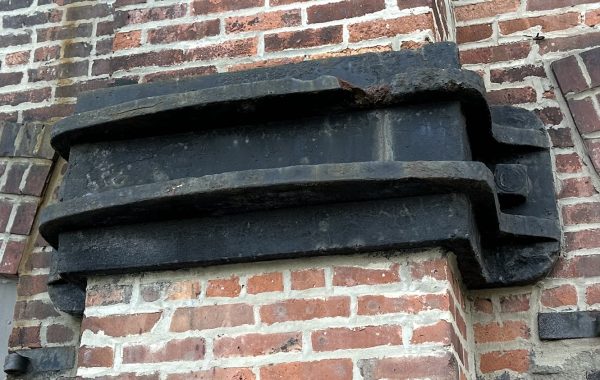First, the handsome fellow in the picture above is Mark Hipwell, who graciously took time off from his packed schedule – he’s an engineer, and a foodie, and an artist, and an ambassador for his home city – to show me around Birmingham last week.
The Birmingham building behind him has a construction date of 1887 on its facade, which is made entirely of terra cotta. While I am no expert on UK construction history, I am confident that the facades are structural bearing walls, and are probably common brick or some other inexpensive masonry behind the terra cotta veneer. There are a number of clues that make the material obvious: the odd size of the masonry units (too large for brick, peculiarly small for stone) the sharp unweathered edges on all of the ornament, the surface texture.
A near contemporary is the Potter Building in New York, which was one of the first extensive uses of architectural terra cotta here. Potter has some quite complex ornament and is considerably taller, but most of its facade is brick; it was another 15 years or so before New York got its first facade with all terra cotta veneer, and that was on a skeleton-frame building.
Why was this happening at that time? The structural technology to get rid of masonry walls in ordinary buildings wasn’t around yet, but there were cities – including NYC and Birmingham – that were growing rapidly. People were looking for a way to build faster and for less money, but ornamented architectural styles were still the norm. In other words, for a few years, terra cotta provided a way to create facades that were built pretty much like those in the past, and looked almost exactly like those in the past, for less money. As architectural sensibilities changed and structural technology allowed for larger windows, the use of terra cotta changed to emphasize more its manufactured and repetitive nature.



